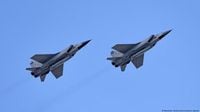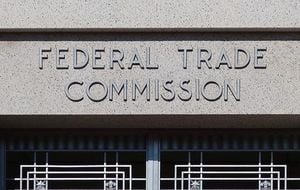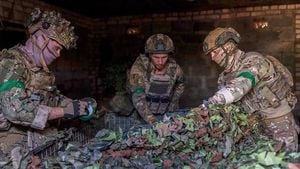On Friday, September 19, 2025, a tense episode unfolded in the skies over the Baltic Sea, sending shockwaves through European capitals and testing the resolve of NATO’s eastern flank. According to the Estonian government, three Russian fighter jets entered Estonia’s airspace near Vaindloo Island, a tiny outpost in the Gulf of Finland, and remained there for a full 12 minutes—an unusually long incursion that officials described as “unprecedentedly brazen.” The aircraft reportedly flew without flight plans, had their transponders switched off, and failed to communicate with Estonian air traffic controllers.
Estonia wasted no time in responding. The Foreign Ministry summoned a Russian diplomat to lodge a formal protest, while Foreign Minister Margus Tsahkna declared that Russia had already violated Estonian airspace four times in 2025 alone, but that Friday’s incident stood out for its boldness. “Which is unacceptable in itself, but today’s violation, during which three fighter jets entered our airspace, is unprecedentedly brazen,” Tsahkna said, as reported by the Associated Press.
Estonian Defense Minister Hanno Pevkur announced that Tallinn would initiate consultations among NATO allies under Article 4 of the alliance’s founding treaty, which calls for discussions whenever a member feels its territorial integrity or security is threatened. “We have decided to start consultations among the allies,” Pevkur wrote on X (formerly Twitter), emphasizing the gravity of the situation. NATO’s North Atlantic Council, the alliance’s main political decision-making body, was scheduled to convene early the following week to address the incident in detail, according to NATO spokesperson Allison Hart.
The response on the ground—and in the air—was swift. Italian Air Force F-35 fighter jets, deployed as part of NATO’s Baltic Air Policing Mission, scrambled to intercept the Russian aircraft. Estonia’s military said the Russian planes had entered from the east, flown parallel to the border, and avoided heading toward the capital, Tallinn. Major Taavi Karotamm, spokesperson for the Estonian Defense Forces, speculated that the incursion might have been intended to “shift the focus of NATO and its members on to defending itself, rather than bolstering Ukrainian defense.”
Across Europe, leaders voiced alarm. European Union foreign policy chief Kaja Kallas condemned the episode as “an extremely dangerous provocation” that “further escalates tensions in the region.” She added, “On our side, we see that we must show no weakness because weakness is something that invites Russia to do more. They are increasingly more dangerous—not only to Ukraine, but also to all the countries around Russia.” Germany’s Foreign Minister Johann Wadephul echoed those concerns, stating, “Vigilance is the price of freedom. This principle of NATO remains as relevant as ever. Today’s unacceptable violation of Estonian airspace by Russia clearly demonstrates this.”
Estonian President Alar Karis was equally blunt, calling the incident “another provocation” and insisting that air defense must be a top NATO priority. He pointed to the new Eastern Sentry mission, aimed at reinforcing security along the alliance’s eastern border, and expressed confidence that it would address “all Russian air threats across the entire eastern flank.”
The United States, for its part, struck a more cautious note. President Donald Trump told reporters, “I don’t love it. I don’t like when that happens. It could be big trouble, but I’ll let you know later,” signaling concern but withholding a definitive stance until he was fully briefed. This measured response stood in contrast to the more forceful condemnations from America’s European allies, and it did little to ease anxieties in the region.
Russia, however, denied any wrongdoing. In a statement carried by state news agency TASS, the Russian Defense Ministry insisted that the flight was “conducted in strict accordance with international airspace rules, without violating the borders of other states.” The ministry claimed the jets had flown over neutral waters of the Baltic Sea, more than three kilometers from Vaindloo Island, and had not deviated from their agreed flight path. As is often the case in such incidents, the facts remain contested and independent verification has proven elusive.
This latest airspace violation comes on the heels of other alarming incidents. Earlier in September, NATO planes shot down Russian drones that had entered Polish airspace, marking another serious cross-border breach since Russia’s full-scale invasion of Ukraine began in February 2022. NATO and Ukrainian officials have warned that these incursions represent a significant escalation, raising fears that the war could spill over into alliance territory.
The backdrop to these aerial confrontations is a war that shows no signs of abating. On the same weekend as the Estonian incursion, Ukraine reported striking two Russian oil refineries in the Saratova and Samara regions—facilities that process millions of tons of oil annually. Ukrainian President Volodymyr Zelenskyy said these attacks were among the “most effective sanctions” against Russia’s war machine. Meanwhile, Russia unleashed a “massive attack” overnight on Ukraine, firing 40 cruise and ballistic missiles and around 580 drones, according to Zelenskyy. The strikes killed at least three people and wounded dozens more, targeting infrastructure, residential areas, and civilian enterprises across multiple regions.
Poland, a NATO member sharing a long border with Ukraine, responded by deploying its own and allied aircraft to protect its airspace, raising its ground-based air defense and radar systems to the highest state of readiness. “Polish and allied aircraft are operating in our airspace, while ground-based air defence and radar reconnaissance systems have been brought to the highest state of readiness,” the operational command said on X.
As the crisis deepens, intelligence agencies are adapting as well. On September 19, 2025, Britain’s MI6 chief Richard Moore declared there is “absolutely no evidence” that Russian President Vladimir Putin wants to negotiate peace in Ukraine, describing Putin as “stringing us along” and “mortgaging his country’s future for his own personal legacy and a distorted version of history.” Moore’s remarks came as MI6 unveiled a new dark web portal, “Silent Courier,” designed to allow potential intelligence sources—even inside Russia—to share sensitive information securely. “To those men and women in Russia who have truths to share and the courage to share them, I invite you to contact MI6,” Moore urged.
With the war in Ukraine grinding on and Russian provocations testing NATO’s resolve, the mood in Europe is one of vigilance—and unease. The latest violation of Estonian airspace is a stark reminder that the conflict’s front lines are not only on Ukrainian soil, but also in the skies above Europe’s eastern edge. As governments scramble to shore up defenses and maintain unity, the stakes for the continent—and for the alliance—have rarely felt higher.




